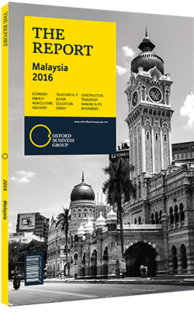Mark Rozario, CEO, Malaysian Innovation Agency (AIM): Interview

Interview: Mark Rozario
How has Malaysia’s innovation strategy evolved over the last five years?
MARK ROZARIO: We started off with our National Innovation Strategy five years ago, when AIM was formed. Our mandate is to look at the whole spectrum of activities, because innovation cuts across every aspect of society. We have identified six key focus areas. Our overall goal is to create wealth through innovation. We start by cultivating a thinking culture. Our priority is how to equip our next generation with a thinking approach and skills to tackle future challenges. This involves engaging with 10 government schools to pilot the offering of the International Baccalaureate programme. The idea is not to change the curriculum but to introduce new teaching methods. We see it as a proving ground for how these methods impact school performance.
What are the other focus areas that could help unlock Malaysia’s innovation potential?
ROZARIO: Our second strategic focus area is social innovation. This involves looking at how we can better leverage the work done by social purpose organisations and how they can work more effectively, with both government and private sector support. We are trying to show how impact can be delivered by bringing the government and private sector together to address social issues such as youth unemployment. We have developed a social impact measurement toolkit which we are offering to social purpose organisations. The key is to show how government funding for these projects can deliver results at the grassroots level. Priority is currently being given to education and youth unemployment by the private sector.
Our third strategic focus area is industry academia collaboration. Here we are trying to look at how we can utilise the knowledge residing in our universities and research institutes. One of the ways was to create Steinbeis Malaysia. It is based on a German model which offers a platform to connect industry with researchers and experts by establishing a network which exists now in 50 countries, bringing exciting possibilities for firms. The fourth area is about looking at what strategic sectors there are and what opportunities exist for new wealth creation. One of the areas we looked at was biomass. We initiated the National Biomass Strategy, starting with the palm oil sector. The biggest opportunities are in Sabah and Sarawak, which make up 56% of all planted area and generate more than 50% of all biomass in Malaysia. For us, this is bringing everything we do together, looking at how we can get the private sector to think more about innovation. We are not trying to tell corporations how to be innovative, but rather provide them with tools to develop their own innovation strategy. As part of this initiative we have created the National Corporate Innovation Index, an indicator which could gauge a company’s innovation performance. The aim is to institutionalise innovation and its governance.
Is AIM looking at any new technologies?
ROZARIO: We are on a constant lookout, scouting for new technologies through PlaTCOM Ventures, an AIM wholly-owned subsidiary. This involves supporting technology transfers and end-to-end commercialisation for SMEs to bring new technologies, products and services to market. Additionally, we have a mandate to make equity investments to turn ideas that have great potential into reality. However, we have to be selective as we have limited resources. We take equity stakes and have invested in 11 companies. For instance, we invested in a firm that does digital autopsy with a foothold in the UK. This offers potential not just to expedite the process but also with regard to data storage. More recently, we invested in a company that treats lung cancer using immuno-therapy. This too has potential beyond this one application. We also have projects in LED and fibreoptics.
You have reached the limit of premium articles you can view for free.
Choose from the options below to purchase print or digital editions of our Reports. You can also purchase a website subscription giving you unlimited access to all of our Reports online for 12 months.
If you have already purchased this Report or have a website subscription, please login to continue.

